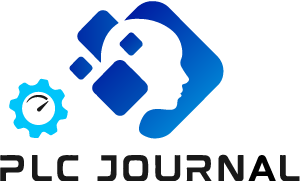How to Recover Forgotten PLC Passwords in 2025
Programmable Logic Controllers (PLCs) play a critical role in driving automation within modern industries. They control machinery, processes, and systems in industries ranging from manufacturing to energy production. However, as with any technology that requires security, PLCs often come with password protection to prevent unauthorized access. While this is essential for security, it can become a significant problem if you forget or lose the password. In 2025, recovering forgotten PLC passwords has become more streamlined, thanks to advancements in technology and methodologies.
This guide will walk you through the steps and tools available to recover forgotten PLC passwords in 2025.
If you want to unlock PLC or HMI password without any hassle, then you can download our PLC HMI unlock software for free.
Besides, you can download PLC software, HMI software, Servo drive software and Inverter software of all brands in the automation world for free.
Then you will get a complete guide on how to do PLC Communication, HMI Communication and PLC to HMI Communication via cable.
1. Understanding PLC Password Security
PLCs designed to secure, and password protection one of the primary methods used to ensure that only authorized personnel can access and modify the controller’s programming. Passwords typically required to:
- Access the PLC’s programming interface
- Modify the control logic
- Change configuration settings
- Download or upload programs
In 2025, PLC manufacturers have continued to enhance security features, making password recovery more challenging but not impossible. Understanding the security mechanisms in place is the first step toward recovering a forgotten password.
2. Common Reasons for Forgetting PLC Passwords
Forgetting a PLC password can happen for several reasons:
- Human Error: Passwords are often complex and forgotten if not recorded properly.
- Employee Turnover: When employees leave without sharing passwords, new personnel may struggle to gain access.
- Infrequent Access: If a PLC rarely accessed, the password forgotten over time.
- Multiple Systems: Managing passwords for multiple PLCs across different systems can lead to confusion and forgotten credentials.
3. Legal and Ethical Considerations
Before attempting to recover a forgotten PLC password, it’s crucial to consider the legal and ethical implications. Unauthorized access to a PLC can lead to severe consequences, including legal action and damage to industrial processes. Always ensure that you have the proper authorization to access the PLC. If you’re unsure, consult with your organization’s legal or IT department.
4. Methods to Recover Forgotten PLC Passwords
4.1. Default Passwords
Many PLCs come with default passwords set by the manufacturer. If the password never changed, you might be able to gain access using the default credentials. However, relying on default passwords significant security risk, and always recommended to change them immediately after initial setup.
Steps:
- Consult the PLC’s User Manual: The default password often listed in the documentation provided by the manufacturer.
- Check Manufacturer’s Website: Some manufacturers provide default passwords on their websites or through customer support.
- Try Common Default Passwords: If documentation is unavailable, you can try common default passwords such as “admin,” “password,” or “1234.”
Note: In 2025, many manufacturers have moved away from using default passwords due to security concerns, so this method may not always be effective.
4.2. Password Recovery Tools
As PLC technology has advanced, so have the tools available for password recovery. In 2025, several software tools designed specifically for recovering or resetting PLC passwords. These tools often work by exploiting vulnerabilities in the PLC’s firmware or by using advanced algorithms to guess the password.
Popular Tools in 2025:
- PLC Password Recovery Pro: A widely used tool that supports multiple PLC brands and models. It uses a combination of brute force and dictionary attacks to recover passwords.
- AutoPLC Unlocker: This tool known for its user-friendly interface and quick recovery times. It supports a wide range of PLCs and can often recover passwords in minutes.
- PLCrack: A more advanced tool that uses machine learning algorithms to predict and recover passwords. It’s particularly effective for complex passwords.
Steps:
- Download and Install the Tool: Ensure you download the tool from a reputable source to avoid malware.
- Connect to the PLC: Use a serial or Ethernet connection to link your computer to the PLC.
- Run the Recovery Process: Follow the tool’s instructions to initiate the password recovery process.
- Record the Recovered Password: Once the password recovered, make sure to record it securely to avoid future issues.
4.3. Firmware Reset
If password recovery tools are unsuccessful, a firmware reset may be necessary. This method involves resetting the PLC to its factory settings, which will remove the password but also erase any custom programming or configurations.
Steps:
- Backup Data: If possible, back up the PLC’s program and configuration settings before proceeding.
- Access the PLC’s Reset Function: This typically done through a physical button or a combination of buttons on the PLC.
- Perform the Reset: Follow the manufacturer’s instructions to reset the PLC to its factory settings.
- Reconfigure the PLC: After the reset, you’ll need to reprogram and reconfigure the PLC as needed.
Note: A firmware reset should be a last resort, as it can lead to significant downtime and data loss.
4.4. Contacting the Manufacturer
If all else fails, contacting the PLC manufacturer is often the most reliable method for password recovery. Manufacturers have access to proprietary tools and methods that can help recover or reset passwords.
Steps:
- Gather Necessary Information: Before contacting the manufacturer, gather all relevant information about the PLC, including the model number, serial number, and any documentation.
- Reach Out to Customer Support: Contact the manufacturer’s customer support team and explain the situation. They may require proof of ownership or authorization before assisting.
- Follow Their Instructions: The manufacturer may provide a specific tool, firmware update, or procedure to recover the password.
4.5. Using Backdoor Passwords
Some PLCs have backdoor passwords that can used to gain access if the primary password forgotten. These backdoor passwords are often undocumented and may require some research or experimentation to discover.
Steps:
- Research Backdoor Passwords: Look for forums, user groups, or online communities where backdoor passwords discussed.
- Try Common Backdoor Passwords: Some PLCs have common backdoor passwords that widely known within the industry.
- Use with Caution: Backdoor passwords can be a security risk, so use them responsibly and only when necessary.
4.6. Advanced Techniques: Brute Force and Dictionary Attacks
For those with technical expertise, brute force and dictionary attacks can used to recover forgotten PLC passwords. These methods involve systematically trying every possible password combination (brute force) or using a list of common passwords (dictionary attack) until the correct one found.
Steps:
- Choose the Right Tool: Select a tool that supports brute force or dictionary attacks for PLCs.
- Configure the Attack: Set up the tool with the appropriate parameters, such as password length and character set.
- Run the Attack: Initiate the attack and wait for the tool to find the correct password.
- Record the Password: Once the password recovered, record it securely.
Note: These methods can be time-consuming and may not always be successful, especially with complex passwords.
5. Preventive Measures to Avoid Future Password Issues
To avoid the hassle of recovering forgotten PLC passwords in the future, consider implementing the following preventive measures:
- Password Management: Use a secure password manager to store and organize PLC passwords.
- Regular Updates: Change passwords regularly and ensure they are strong and unique.
- Documentation: Keep detailed records of all passwords and store them in a secure location.
- Training: Train employees on the importance of password security and proper password management.
- Backup: Regularly back up PLC programs and configurations to minimize downtime in case of a password issue.
Importance of Recovering Forgotten PLC Passwords
Programmable Logic Controllers (PLCs) are essential components in industrial automation, controlling various processes like assembly lines, machinery, and equipment in real time. With the increasing reliance on PLCs for crucial operations, ensuring that the passwords used to protect these systems remain secure is paramount. However, what happens when a password is forgotten, and critical access is lost? The importance of recovering forgotten PLC passwords cannot be overstated.
PLCs often store sensitive operational data, configurations, and programming instructions. Unauthorized access or the inability to modify settings can lead to inefficiencies, security vulnerabilities, and costly downtime. Furthermore, accessing a PLC system typically requires secure authentication to prevent unauthorized tampering with equipment and processes. A forgotten password, in such cases, can halt operations and even impact safety protocols.
Risks Associated with Lost PLC Passwords
The consequences of losing a PLC password can be severe and multifaceted. These risks include:
- Operational Downtime: Lost access to PLCs means that workers are unable to perform essential tasks like altering program settings, conducting diagnostics, or troubleshooting equipment. This downtime may result in delayed production schedules, affecting profits and customer satisfaction.
- Increased Security Vulnerabilities: In industrial environments, PLCs are integral in controlling sensitive processes. A forgotten password could delay timely updates to software or security protocols, leaving systems exposed to cyber threats.
- Inability to Perform Maintenance: Many PLC systems require passwords for performing maintenance or troubleshooting. Without the proper credentials, technicians may be unable to access diagnostic tools or make necessary adjustments to systems, leading to further complications.
- Legal and Compliance Issues: In some industries, losing control over PLCs might violate regulatory compliance or safety standards, which could result in fines, sanctions, or legal challenges. PLCs must be maintained in line with industry regulations, and not being able to modify settings could have serious legal ramifications.
- Costly Recovery Efforts: In extreme cases, the inability to recover a forgotten password can result in having to replace expensive PLC hardware or engage in costly recovery processes. These expenditures can significantly impact a company’s budget and profitability.
Common Methods for PLC Password Recovery
Recovering a forgotten PLC password can be challenging due to the high-security nature of these systems. However, there are several methods available to recover or reset a lost password, depending on the PLC model and manufacturer:
- Factory Reset: Some PLC models offer a factory reset option that restores the device to its default settings, including the password. However, this method will often erase all custom configurations and program settings, making it a last resort.
- Password Reset Software: Several third-party tools and software are designed to help users recover or reset PLC passwords without losing data. These tools often work by exploiting vulnerabilities or weaknesses in the firmware or software of the PLC.
- Accessing Backup Files: In cases where backups of the PLC’s configuration and programming files are available, restoring from a backup may allow a user to bypass the password requirement. This is possible if the backup was made before the password was lost.
- Consulting Manufacturer Support: Many PLC manufacturers have technical support teams available to assist in password recovery. This typically involves proving ownership of the system and providing serial numbers or other identifying information.
- Hardware Key Recovery: Some PLCs have a physical “key” or jumper that can be used to bypass password protection. This method often requires disassembling the device to access the hardware components, which can be risky and time-consuming.
Recovering Forgotten PLC Passwords
If you find yourself locked out of your PLC system, follow these general steps to begin the recovery process:
- Assess the Situation: Verify if the password is truly forgotten or if it’s simply an issue with the input method. Check for common mistakes like typographical errors or incorrect capitalization.
- Check for Backup or Default Passwords: Some PLCs have default passwords that may not have been changed by the user. Consult the manufacturer’s documentation or online resources to see if a default password exists.
- Look for a Reset Option: If your PLC supports it, attempt a factory reset. This typically involves pressing a specific combination of buttons or switches on the device. Be sure to back up any critical data beforehand, as a reset can erase custom settings.
- Use Password Recovery Tools: If available, use PLC password recovery software or tools. These programs often automate the process of cracking or bypassing the password, especially for older or less secure PLC models.
- Consult Manufacturer Support: If other options fail, reach out to the manufacturer’s technical support team. They can provide more specific guidance on how to recover or reset the password.
- Restore from Backup: If you have backup copies of the PLC’s configuration, consider restoring from a known, working version to avoid further complications.
- Test Access and Security: After successfully recovering access, test all features and functions of the PLC to ensure that it operates as expected. Additionally, update the password and review security protocols to prevent future issues.
Tools and Software for PLC Password Recovery
There are several tools and software options available for PLC password recovery. Some of the most popular options include:
- PLC-Password-Recovery Software: This tool is designed specifically to work with various PLC brands. It helps in recovering or resetting passwords without affecting the device’s functionality.
- HMI Password Recovery Tools: For PLCs that integrate with Human-Machine Interfaces (HMIs), there are dedicated password recovery tools that can reset the password for the HMI, giving access to PLC settings.
- Manufacturer-Specific Recovery Tools: Many PLC manufacturers offer proprietary tools designed to recover passwords for their specific models. For instance, Siemens, Allen-Bradley, and Schneider Electric all offer recovery tools for their PLC systems.
- Universal Recovery Software: Some software is designed to work across multiple PLC brands. These universal tools allow for a broader range of recovery solutions, although compatibility with specific PLC models should always be verified.
Best Practices for Securing and Managing PLC Passwords
To prevent the need for future password recovery, it’s essential to implement best practices for password management:
- Use Strong, Unique Passwords: Avoid using simple, easily guessable passwords. Use a combination of letters, numbers, and special characters to create a strong, secure password.
- Implement Multi-Factor Authentication (MFA): Whenever possible, enable multi-factor authentication for an additional layer of security. This could involve a combination of passwords, hardware tokens, and biometric identification.
- Regularly Update Passwords: Change passwords on a regular basis to minimize the risk of unauthorized access. Consider setting a schedule for password updates and ensure that all personnel follow this schedule.
- Store Passwords Securely: Use a password manager or encrypted file to store passwords securely. Avoid writing them down in unsecured locations.
- Audit Access: Regularly audit who has access to PLC systems and ensure that only authorized personnel are able to make changes to the system.
Real-Life Case Studies of Successful PLC Password Recovery
Several industries have experienced successful PLC password recovery. One case involved a manufacturing plant that lost access to its PLC system after a password was forgotten. By using password recovery software, the technicians were able to regain control without erasing any data. In another case, a PLC password was recovered by consulting with the manufacturer’s support team, which helped restore access quickly and efficiently.
Expert Tips for Preventing PLC Password Loss
To avoid password loss in the future, experts recommend:
- Implementing a password policy that includes strong password creation and regular updates.
- Training staff on secure password management practices.
- Backing up PLC configurations regularly to avoid relying on passwords alone for system recovery.
- Using external authentication systems to reduce dependency on single passwords.
6. Conclusion – How to Recover Forgotten PLC Passwords in 2025
Recovering a forgotten PLC password in 2025 is more manageable than ever, thanks to advancements in technology and the availability of specialized tools. Whether you choose to use default passwords, recovery tools, firmware resets, or contact the manufacturer, it’s essential to follow legal and ethical guidelines throughout the process. By implementing preventive measures, you can avoid future password issues and ensure the continued security and efficiency of your industrial automation systems.
Remember, the key to successful password recovery is preparation and knowledge. Stay informed about the latest tools and techniques, and always prioritize security in your industrial operations.
For any additional queries or support, please email at picjournalweb@gmail.com. OR WhatsApp-







